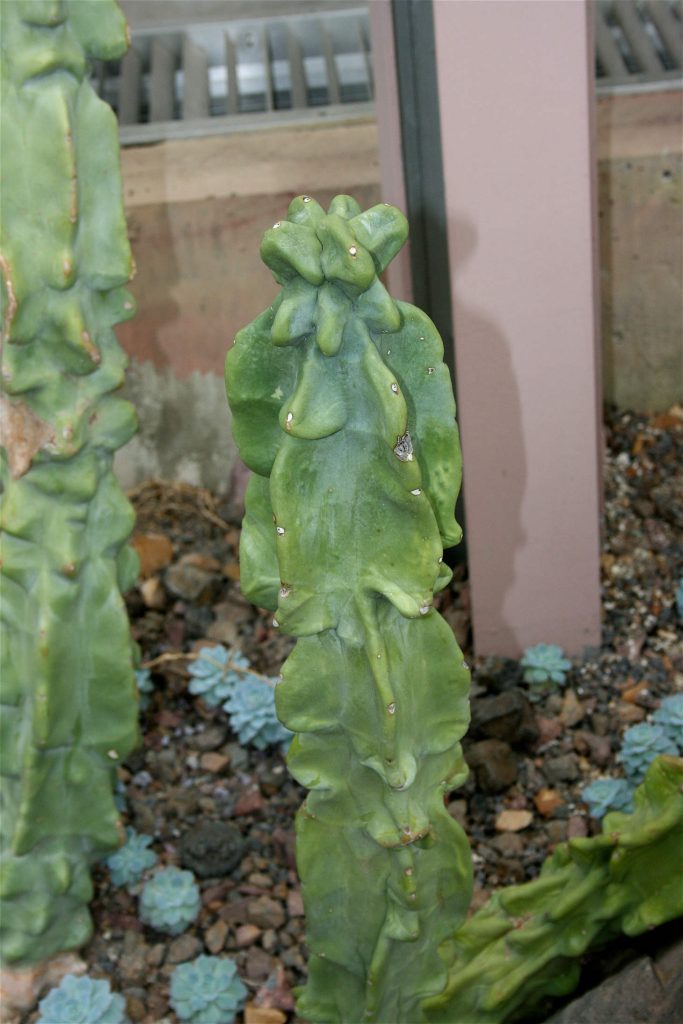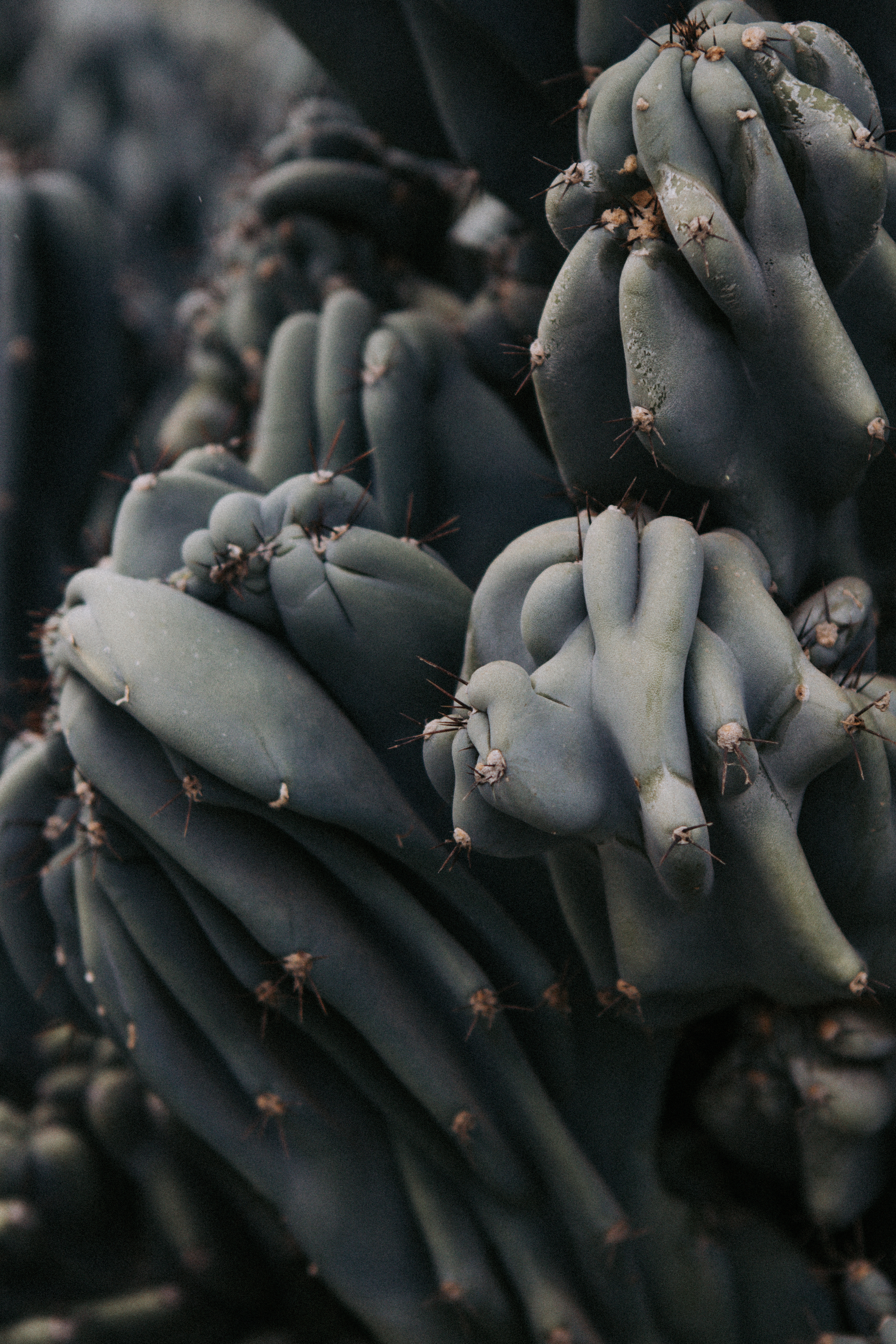Monstrose Succulent Varieties
Monstrose succulent varieties are unusual plants that grow in twisted, bumpy, or abnormal shapes because of genetic mutations. These plants stand out from regular succulents with their knobby stems, uneven surfaces, and unpredictable forms. Many collectors and gardeners find them appealing because every plant looks unique.
You might see monstrose succulents with strange patterns or clusters that don’t follow the normal growth patterns. These odd shapes make them popular for people looking to add a conversation piece to their collection. Learning about monstrose varieties will help you spot their features and care for them better.
Understanding Monstrose Succulent Varieties
Monstrose succulents display non-typical growth, forming odd shapes and textures. These unique forms are the result of genetic mutations, often making them stand out in any collection.
Definition and Key Characteristics
Monstrose succulents are plants that show abnormal, irregular, or distorted growth. This type of mutation affects the way their tissues develop, often causing them to grow lumpy, knobby, or twisted. Unlike typical succulents, monstrose varieties break the usual shape of stems or leaves.
Key features of monstrose succulents include uneven stems, random bumps, and unpredictable forms. The word “monstrose” points to these strange, almost monster-like shapes. These unique patterns come from mutations in the plant cells during the growth process.
Most monstrose succulents are stable clones grown for their odd looks. These plants are treasured by many because no two specimens look exactly the same, making each one distinct.
Common Types of Monstrose Succulents

Some of the best-known monstrose succulents are found in cactus families. Lophocereus schottii f. monstrose (Totem Pole Cactus) is famous for its smooth, bumpy, column-like stems. Another popular example is the Euphorbia lactea ‘Monstrose’, which develops twisted, almost coral-like branches.
You might also see monstrose forms in Trichocereus pachanoi, Opuntia, and Myrtillocactus geometrizans. A quick reference table is below:
| Common Name | Scientific Name | Description |
|---|---|---|
| Totem Pole Cactus | Lophocereus schottii f. monstrose | Lumpy, spineless columns |
| Coral Cactus | Euphorbia lactea ‘Monstrose’ | Twisted, wavy branches |
| Monstrose Blue Myrtle | Myrtillocactus geometrizans | Bumpy, odd stems |
These varieties can be grown indoors or outdoors. You may notice the growth is always irregular, setting monstrose types apart from more traditional succulents.
Notable Monstrose Succulent Species
Monstrose succulents often show unusual shapes, distorted growth, or clusters of stems. These rare forms can add distinct character to your plant collection and are often valued among collectors for their uniqueness.
Euphorbia lactea Monstrose
Euphorbia lactea (Coral Cactus) monstrose grows in twisted, lumpy shapes rather than straight stems. This plant thrives in bright, indirect light and require well-draining cactus soil. It’s best to water them only when the soil is completely dry.
A word of caution: Euphorbia lactea produces a milky sap that is a known skin and eye irritant. Always wear gloves when handling the plant to avoid contact.
Distinctive Echeveria and Aeonium Forms
Some Echeveria and Aeonium species can develop monstrose growths. These changes can appear as extra leaf whorls, abnormal rosettes, or wavy edges. Echeveria ‘Monstrose’ often grows with distorted, bumpy foliage, giving each plant a one-of-a-kind look.
Aeonium monstrose forms may show irregular, branched stems or layers of dense, twisted leaves. Their colors range from green to purple or even black, depending on the variety.
Both types stay compact, making them good choices for containers. Regular care involves bright light and gentle watering. Avoid overwatering to prevent rot. These odd forms tend to grow slower, but their appearance draws interest all year.
Unique Senecio Mutations
Senecio includes several succulents that occasionally develop monstrose mutations. These rare plants may show abnormal stem branching, fused leaves, or thickened growth. Senecio rowleyanus (String of Pearls) can sometimes produce beads that join together or appear unusually swollen.
Senecio articulatus (Candle Plant) may produce knobby, fused segments when monstrose. The difference is easy to see compared to normal smooth-stemmed forms.
These succulents need well-draining soil and moderate watering. Give them a sunny spot, but protect from harsh afternoon sun to prevent burns. If you enjoy plants with quirky forms, a monstrose Senecio can bring something different to your arrangement.
Origins and Causes of Monstrose Growth
Monstrose growth in succulents often happens after changes in the main growing points of the plant. These changes can be caused by genetic mutations or outside factors like injury or disease.
Genetic Mutation and Meristem Tissue
Monstrose forms frequently start with a genetic mutation affecting the plant’s growth pattern. This usually happens in the apical meristem, which is the area at the tip of the stem where new cells are made.
When a mutation changes how the meristem tissue works, the plant may grow in strange, uneven ways. This can lead to lumpy, spiraling, or twisted shapes that look very different from normal plants.
Sometimes, the mutation happens during cell division, causing unpredictable shapes in roots, stems, or leaves. The changes are part of the plant’s DNA, so if you grow new plants from cuttings, the odd patterns usually repeat.
Environmental and Physical Influences
In some cases, monstrose growth is not caused by genes alone. Physical injury, disease, or environmental stress can also trigger changes in a succulent’s apical meristem.
If a plant is damaged, by pests, weather, or tools, the meristem can heal in a way that causes uneven cell production. This may produce irregular lumps or extra plant parts, creating the monstrose look.
Key environmental triggers:
- Sudden temperature changes
- Fungal or bacterial infections
- Mechanical wounds
Your plant may display monstrose features for the rest of its life if the meristem is permanently changed.
Care and Cultivation of Monstrose Succulents
Monstrose succulents need specific care to stay healthy and show off their unique growth. Proper soil, the right amount of water and light, and good pest control help these rare plants thrive.
Ideal Succulent Soil and Drainage

The right soil keeps roots from sitting in water and reduces the risk of rot. Choose a well-draining succulent soil mix to provide good airflow. A good option is to mix regular potting soil with coarse sand and perlite or pumice.
Use pots with drainage holes. Avoid heavy clay soils that keep too much moisture. When planting outdoors, make sure the spot does not stay wet after rain.
A quick test: pour water over the soil and check if it drains out in less than a minute. If not, add more sand or perlite.
Light, Temperature, and Water Requirements
Most monstrose succulents grow best in bright, indirect sunlight. Too much direct sun, especially in hot climates, can lead to burns or leaf damage. Indoors, place them near a window with filtered light.
Keep temperatures between 65°F and 80°F (18°C to 27°C). Protect the plants from frost and extreme heat. If outside, bring them indoors when temperatures drop below 50°F (10°C).
Water only when the soil is completely dry. Overwatering is one of the top reasons for succulent problems. In winter, cut back on watering even more. Always check the soil with your finger, if it feels dry a couple of inches down, it is time to water.
Managing Pests and Disease
Monstrose succulents can attract common pests such as mealybugs and spider mites. These pests often hide in crevices. Watch for sticky residue, webbing, or cottony spots.
Here are simple steps for pest control:
- Isolate infected plants
- Remove pests with a damp cloth
- Spray with diluted soapy water
Check your succulents regularly for signs of diseases like root rot or mold. Good airflow and not overwatering reduce the chance of fungal issues.
If you see black spots or mushy areas, trim the affected parts with clean scissors. Cleanliness helps prevent problems from spreading to the rest of your collection.
Growing a Unique Succulent Collection
Building a succulent collection with monstrose varieties adds interest to your space. Combine different shapes, colors, and sizes for an eye-catching display.
When adding new plants, quarantine them for at least two weeks before putting them with the rest. This step limits pest spread. Label your plants to keep track of their names and care notes.
Display ideas:
- Use shallow trays for several small succulents
- Arrange odd shapes in a rock garden
- Combine monstrose forms with normal succulents for contrast
Monitor your plants often and note any changes in leaf color or texture. Detailed records help you adapt care to keep each variety healthy.

